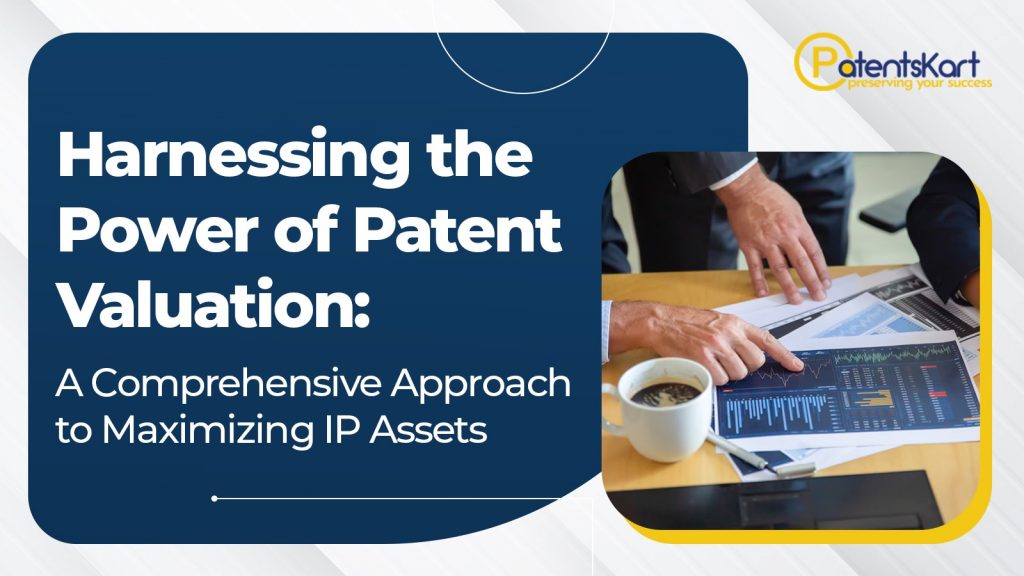In today’s rapidly evolving technological landscape, intellectual property (IP) assets have become pivotal drivers of innovation and business success. Among these assets, patents stand out not only as symbols of groundbreaking ideas but also as strategic tools that can significantly enhance a company’s competitive advantage. However, to fully harness the value of patents, organizations must employ a comprehensive approach to patent valuation. This process enables businesses to accurately assess the worth of their IP assets and make informed decisions about monetization, licensing, and future innovation strategies.
Why Patent Valuation Matters
The importance of patents is undeniable—offering legal protection for inventions, technologies, and processes. Yet, beyond their legal standing, patents hold immense economic value. For companies of all sizes, especially in technology-driven sectors, patent portfolios can represent a significant portion of their overall worth. Understanding this value, however, is not straightforward. Patent valuation goes beyond simple market appraisals and involves a multi-faceted analysis that examines technical, legal, and commercial factors.
Whether you’re a startup with a single patent or a multinational with an extensive IP portfolio, patent valuation plays a critical role in strategic decision-making. A well-constructed patent valuation allows businesses to:
- Strengthen Negotiation Positions: Whether negotiating licensing deals or mergers and acquisitions (M&A), knowing the exact worth of your patents puts you in a stronger position to negotiate favorable terms.
- Secure Financing: Patents can serve as collateral for securing loans or attracting investors, provided their value is well-established and accurately documented.
- Enhance IP Monetization: Patent owners can generate revenue through licensing agreements or selling their patents outright, maximizing the return on investment in innovation.
The Comprehensive Approach to Patent Valuation
A robust patent valuation process is not a one-size-fits-all solution. It requires a comprehensive approach that considers the unique attributes of the patent and the market it operates within. Below are the key steps and considerations involved in maximizing the value of IP assets through patent valuation:
1. Technical Assessment
The first step in patent valuation is understanding the technical merit of the invention. How novel is the technology? What problem does it solve, and how is it different from existing solutions? Evaluating the scope of the patent claims, the strength of the underlying technology, and the potential for further innovation is essential for determining its baseline value.
2. Legal Strength
The legal enforceability of a patent is a key factor in determining its value. This involves reviewing the patent’s status in relevant jurisdictions, examining prior art, and assessing the likelihood of successfully defending the patent in litigation. Strong, well-protected patents hold more value in the marketplace, while patents vulnerable to challenges may diminish in worth.
3. Market Potential
A patent’s value is closely tied to its commercial applicability. How relevant is the invention to current market trends, and what is the potential size of the addressable market? Is there demand for the patented technology, and can it be integrated into existing products or used to create entirely new markets? Conducting a market analysis will provide insight into how much revenue the patent could generate, both directly (through sales) and indirectly (through market positioning).
4. Competitive Landscape
In addition to market demand, the competitive landscape must also be analyzed. Are there existing patents that cover similar technologies? If so, how does your patent compare in terms of scope and enforceability? Being able to identify where your patent stands in relation to others can help determine its relative value within the industry.
5. Economic Impact
Finally, the economic impact of a patent must be quantified. This step involves calculating potential income streams, whether through licensing, direct sales, or cost savings from keeping competitors at bay. Various valuation methods can be employed, such as the Income Approach, which estimates future income from the patent; the Market Approach, which compares the patent to similar IP assets that have been sold or licensed; and the Cost Approach, which evaluates the cost of developing a similar technology from scratch.
Realizing the Full Potential of Patent Valuation
While patent valuation is essential for understanding the worth of IP assets, its true power lies in its application. Companies can leverage patent valuations to make strategic decisions that align with their broader business goals. For instance, patents that no longer align with a company’s core focus may be sold to generate cash flow, while others may be licensed to create new revenue streams.
Additionally, patent valuation can guide R&D investment decisions. By identifying which areas of a patent portfolio hold the most potential, companies can allocate resources more effectively, ensuring their innovation efforts focus on high-value opportunities.
In M&A scenarios, patent valuations can be used to assess the potential synergies between companies, ensuring that IP assets are correctly factored into deal negotiations. Investors also increasingly view a company’s IP portfolio as a critical asset, with patent valuations influencing investment decisions and stock valuations.
Conclusion
The value of patents extends far beyond their legal function; they are critical drivers of innovation, business growth, and competitive advantage. A comprehensive approach to patent valuation allows businesses to fully understand the potential of their IP assets and leverage them effectively in the marketplace.
At a time when innovation is moving at breakneck speed, and competition is fierce, the ability to accurately value patents is a skill that no forward-thinking company can afford to overlook. By integrating patent valuation into your business strategy, you can not only maximize the returns on your existing IP but also pave the way for future success.
Harness the power of patent valuation, and turn your innovations into valuable assets that propel your business forward.







